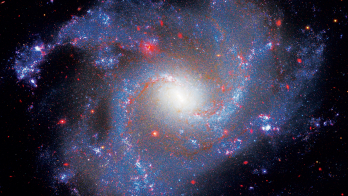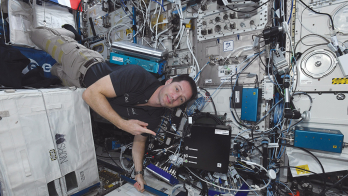
In June, two major survey collaborations released their data to the world’s astronomy community. The Sloan Digital Sky Survey (SDSS) released observations of some 14 million objects, including spectra of 50,000 galaxies and 5000 quasars. The 2dF galaxy redshift survey released the redshifts of some 100,000 galaxies.
A preliminary analysis of the SDSS data has already revealed two record-breaking quasars at redshifts of 6.0 and 6.2.
Quasars – short for quasi-stellar objects – are no larger than our solar system, yet they can outshine galaxies containing hundreds of billions of stars.
The survey employs the 2.5 m telescope at the Apache Point Observatory, New Mexico. Over the next four years, astronomers will measure the distance to more than a million galaxies, and these distances will be combined to produce the largest three-dimensional map of the universe ever.
The 2dF survey uses the Anglo-Australian telescope on Mount Stromlo. The goal of the collaboration is to measure 250,000 redshifts by the end of the year. Preliminary results include the measurement of irregularities in matter distribution, corresponding to fluctuations in the microwave background (CERN Courier July/August p15).





